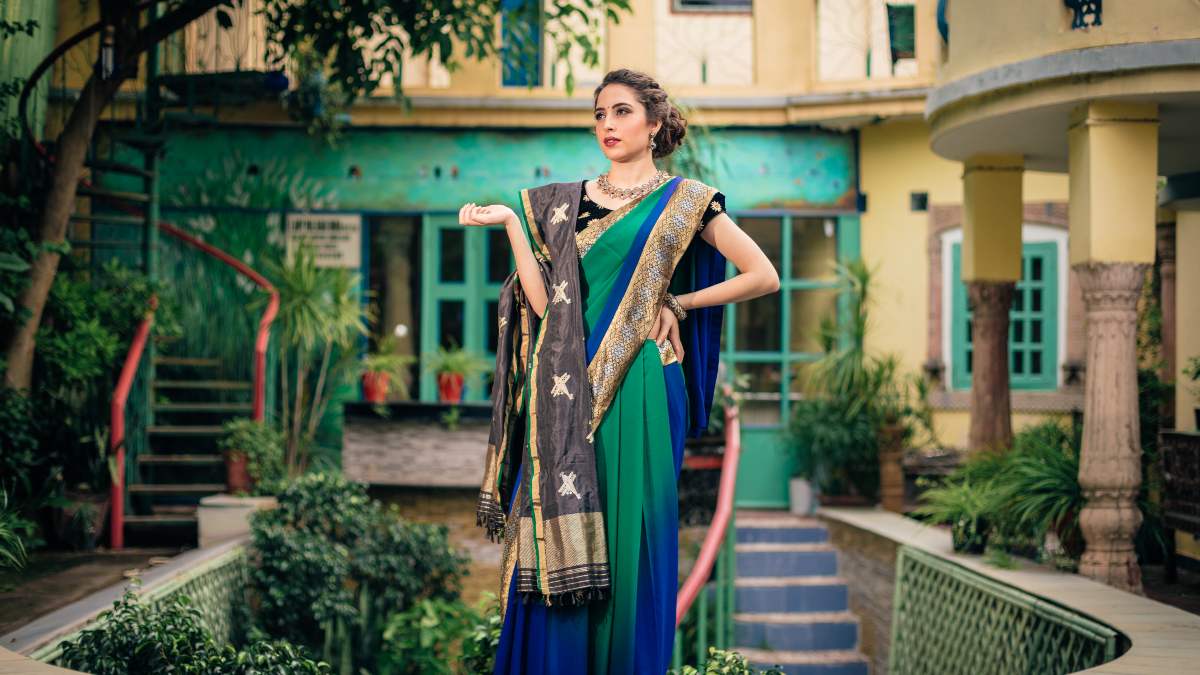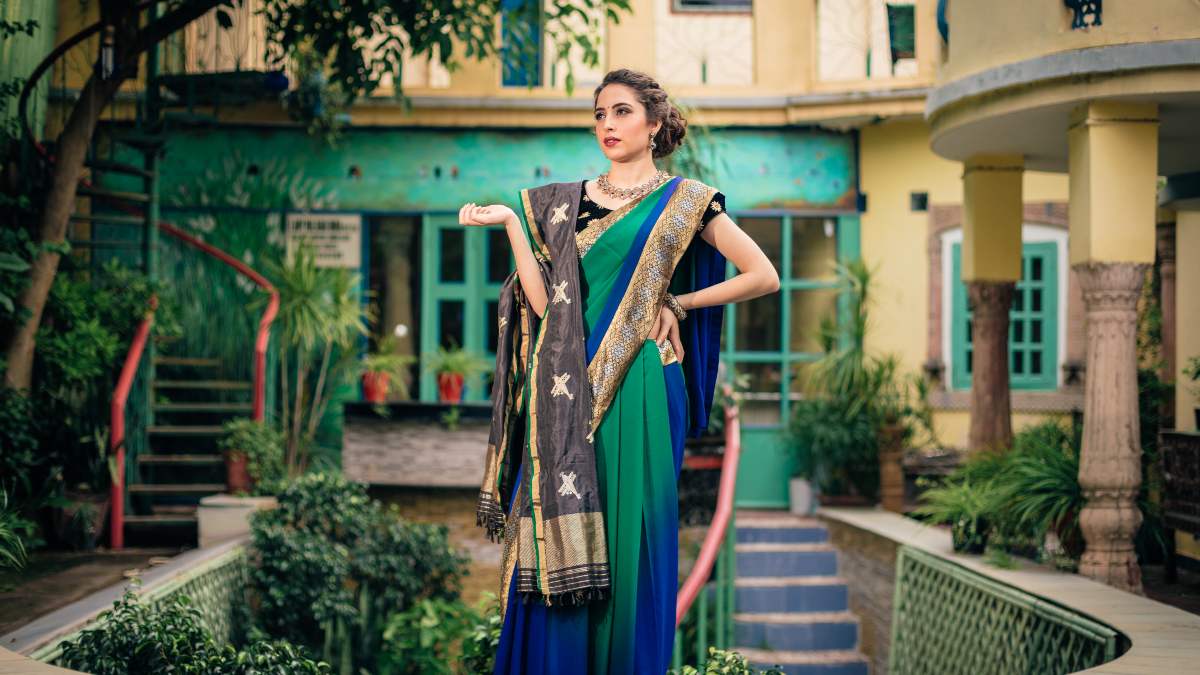
Mansa, a princely state of Gujarat, keeps a tale of princely patronage alive: one of weaving the most exquisite and vintage motifs in pure silver thread onto the finest silk under the craft project, Sri Tana Bana. The brainchild of the graceful Thakurani of Mandawa, Darshana Kumari, and her two daughters, R.K. Geetanjali Shah of Tehri Garhwal and R.K. Priyanjali Katoch of Kangra Lambragaon, Sri Tana Bana is their bid to keep the looms of Mansa alive. Darshana, the princess of Mansa state, is steering this endeavour. Mansa, known for its Ambaji temple and majestic stepwell, was the seat of the Chavda Dynasty. It is also the state where the family of India’s Home Minister Amit Shah has its roots!
On marrying Thakur Kesri Singh of Mandawa, Darshana took with her the memory of luscious silks, as she crossed the threshold to live in what is called the fresco heavens of Shekhavati, where the walls of each haveli and castle are resplendent with frescoes dating back a century or two. From frescoes to weaves, it was only recently that she made the two worlds meet. Recalls Geetanjali, “I was always fascinated with the chiffon saris our ancestors wore, lined with woven borders. I wanted to recreate that for my trousseau but was totally crestfallen with what was available in the market.» This prompted Darshana to get back to her family›s looms in Mansa. Lo and behold! The most beautiful borders were created in 98% silver. After beginning as a personal project, it was converted into a well-nurtured craft project. «Looms were lying idle, weavers were moving to the city. This project got them clicking back to life. This, for us, is the biggest source of happiness.”
The weaves by the Mandawa family are a happy union of fresco designs and rich weaves. The castle of Mandawa is known for its vibrant, often quirky, frescoes that the ladies of the haveli get inspired by and convert into weaves. Hence, to the surprise of a weave collector, emerges a dupatta with the motif of a glider. Recalls Darshana ji, “All we have is a picture of this fresco that was possibly done when the Wright Brothers created wings and the villagers used their imagination to paint a glider on our wall.” The ladies combine the amazing fresco motifs of Mandawa with Mansa weaves. Hence, right next to a paisley, a floral motif or a mata ni pachedi, you could find a shining sun, the symbol of the Suryavanshi rulers, or a tiger that dots the Aravalli forests, or even a vintage automobile! These are all woven into sarees, achkans, poshaks and odhnas. Whilst the daughters back their mother with their ingenuity, enterprise and creativity, Sri Tana Bana remains the creative ouvre of Darshana ji. Priyanjali laughs when she says, “I think our biggest role is to make our mother’s understated taste a wee bit saleable and commercial. Her sense of design and colour is too evolved for the market.” The Mandawa were always found to live in rare richness infused by heritage and craft. A close-knit family led by the grand patriach, the late Thakur Kesri Singh ji, they were one of the first few nobles to open their home to heritage tourism. Recalls Gitanjali, “Our father worked in a bank, and we were posted to Indore when we went for a holiday to Nepal and lived in the luxury tents there. He had been so inspired by them that he decided to replicate the same back home.




He was wedded to Mandawa. I suspect that he would have chosen it over us also!” This vision prompted him to give up his job, move to his village and dot the family castle with a row of mud houses, earthen on the outside and plush inside. Castle Mandawa was founded in 1984 and, today, it is a heritage chain with a haveli in the heart of Jaipur, a castle and a resort. Perhaps the best place to discover the legacy of Shekhawati, Castle Mandawa, a fortress, has now been converted into a luxurious heritage hotel. It revives the whole idea of luxury in a royal ambience. Medieval turreted towers and palanquin-roofed balconies blend with modern comforts in old-world rooms. Family portraits, antique cannons and arms add to the charm of this familyrun resort where tradition still runs strong. Even time is measured by a different clock—a huge brass gong is struck by the resident timekeepers at the fort every hour. It is a home to many destination weddings, film shoots and resort holidays, but it is where the heart of the family resides.















